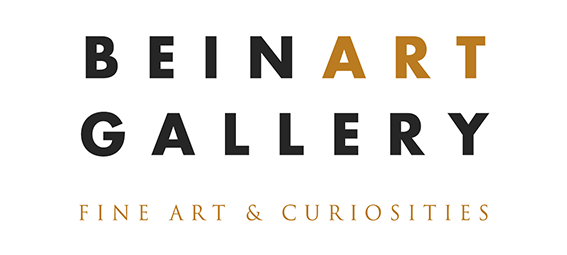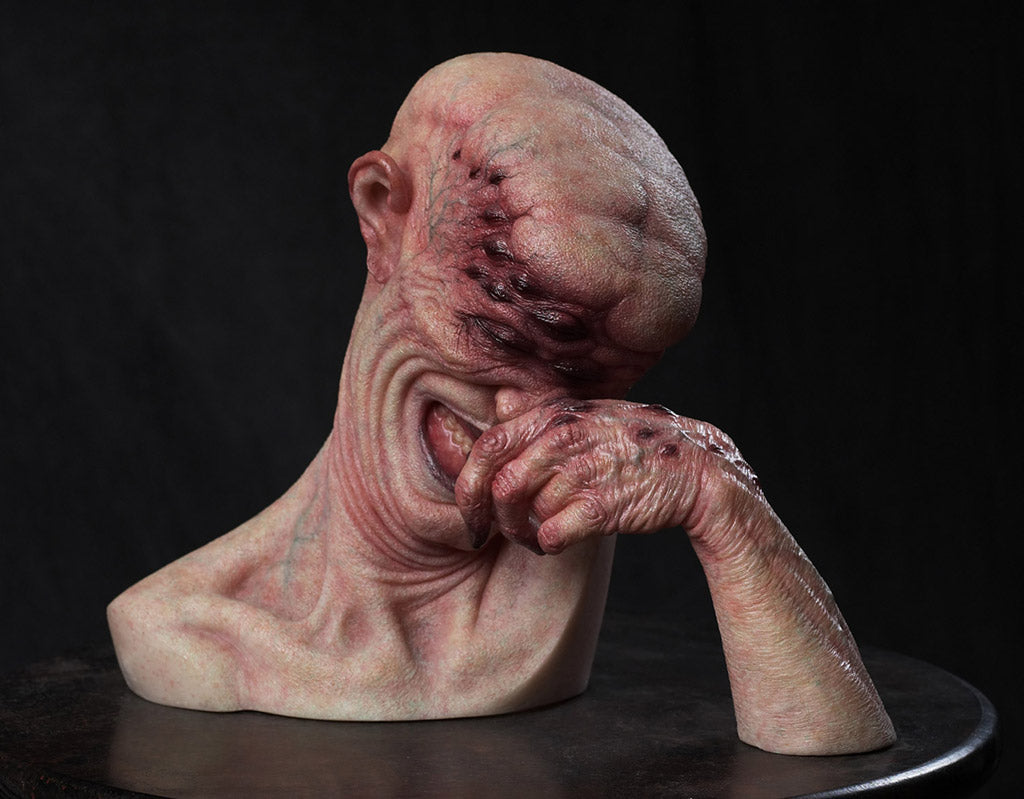"Softspot" - Sculpture by Chet Zar.
This article was written by Carrie Ann Baade. First published in Black Magick: The Art of Chet Zar by Beinart Publishing in 2012.
Do you shut your eyes during a scary movie? Or do you rewind, watch the bloodcurdling scene again, put the poster of that unnameable horror up on your bedroom wall and live with it? To react predictably one would recoil, but if you listen to the clicking claws and dripping venom and do not shut your eyes, you have the opportunity to examine the phenomenal. Chet Zar’s favorite subjects are those who we run to avoid. His works combine an awareness of the outsider with the skills of a traditional artist. Awakening the viewer to flight and delight, Zar gives authority to his subconscious by painting the most unconventional of portraits, those of monsters.
See available paintings by Chet Zar.
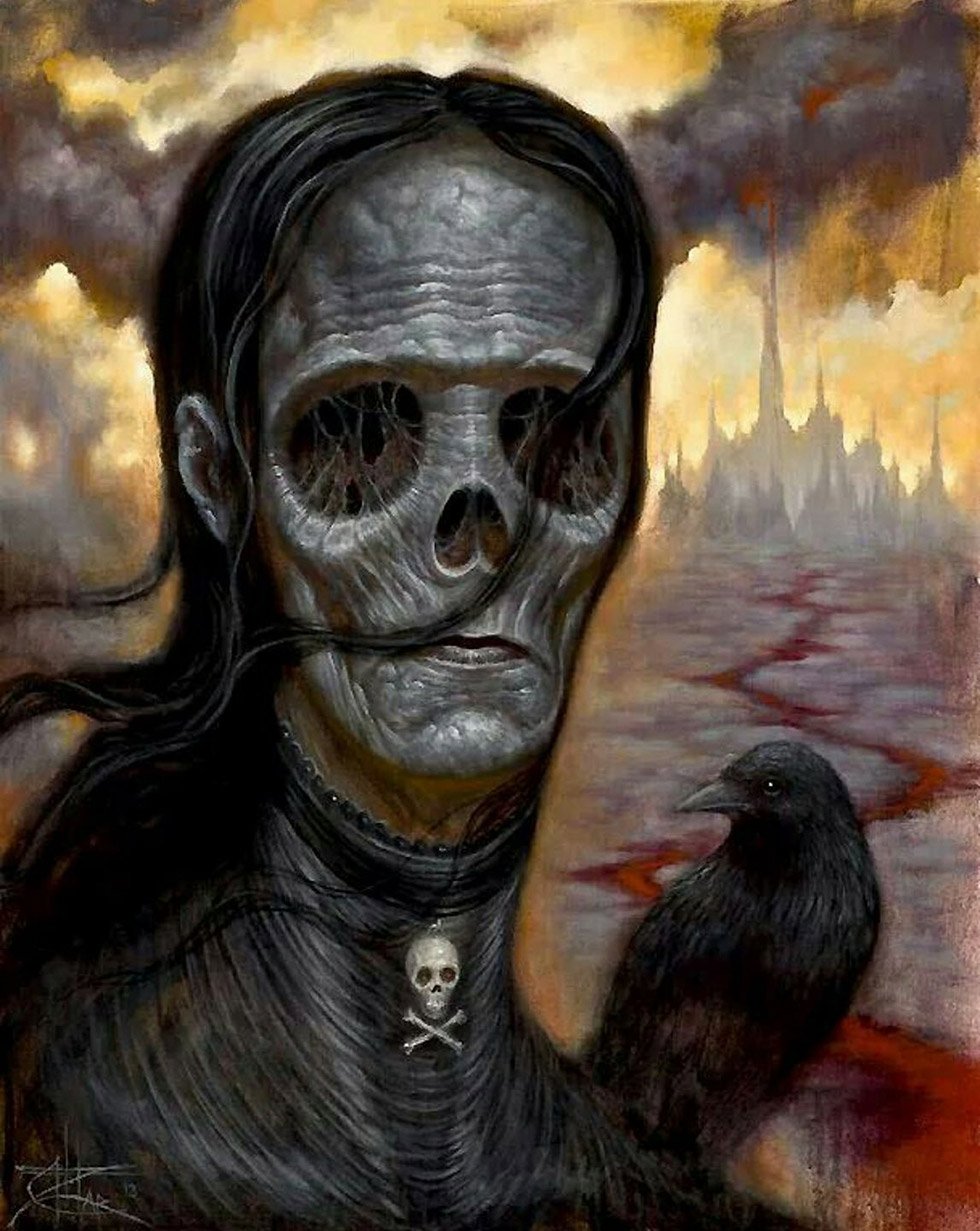 "The Hungry Ghost of Blood Castle" - Oil painting by Chet Zar
"The Hungry Ghost of Blood Castle" - Oil painting by Chet Zar
Historically, the function of the portrait was to establish the status or notoriety of a sitter and hold a representation of their likeness in highest regard. Zar turns this old format into a stage to elevate the status of those who only come out during the climax of a horror film, thus raising these monsters to a new level of hierarchical importance. Joanna Woodall explains the long-established role of the portraits: The raison d’etre of these images was actually to represent sitters as worthy of love, honor, respect, and authority. It was not just that the real was confused with the ideal, but that divine virtue was the ultimate, permanent reality.
So what's left when symmetry, smooth skin, and glistening hair are removed for a visage and reduced to sinews? When all traces of human class, race, and beauty have been scoured off, is there perhaps a more authentic purity in the monstrous? Even with sockets bereft of eyes, there still exists a palpability through which we can detect emotions. In attempt to understand what he paints, Zar has wondered if these creatures’ portraits were people without their masks, or if they might be facets of his own personality. He explains, “They are ugly and scary, yet they have this sort of innocence, as well. And it’s what we truly are as humans. We are ugly, smelly, violent animals, yet we still have this innocence, due to the fact that we are all scared to die.” This is certainly true of the subject in The Strange Fisherman, whose teary eyes well with concern for a worm upon a hook, his face contorting with apprehension about even the smallest loss of life. One of the most endearing pieces is Soft Spot. The subject’s warmth glows right through his translucent imprimatura into a quiet laughter. His bashful luminosity makes you wonder what he is so shyly chuckling about behind his hand. In Zar’s work, we see our humanity manifested through the tenderness detected despite being encrusted with pustules or grizened to the point of desiccation. He doesn’t paint lifeless Halloween masks. He paints the faces underneath our faces, which display an inner truth about ourselves. These monsters are ours, whether they are created in the depths of our psyche or are the humanity that remains when we destroy the life we knew.
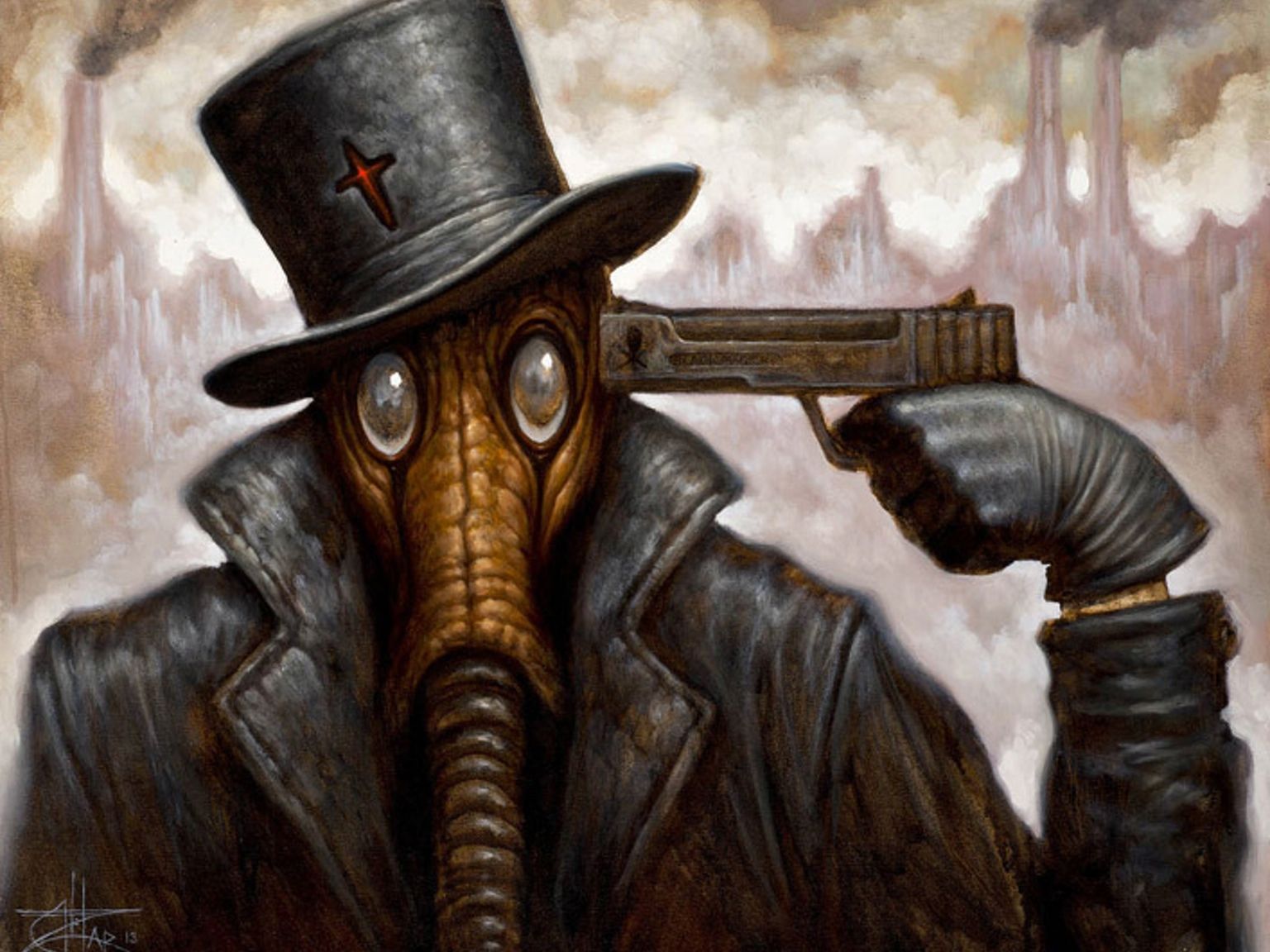
"Ego Death II" by Chet Zar
Within his portraits are the personifications of our deepest fears as a culture: war, chaos, and destruction—the post-apocalyptic reality…that we may indeed look like this after the world “ends.” Zar embraces the decay of our civilization. He says that “Racism, bigotry, hatred, religious fear, the iron fist of linear thinking contribute to the decay of our society. The death of our negative and freakish selves, ” as represented in the work, “has a positive message.” Zar’s fiends appear after the crisis to live in a wasteland that is unlikely to be inhabitable by well-coiffed, suburban consumers. A new breed of figures appears in such works as Black Magic and Double Whammy; these are portraits of dark assassins in gas masks behind smoking guns. These characters have already faced the irreconcilable change that severely altered the prior way of life. Their faces have merged with the gas masks that would ordinarily protect the wearer from inhaling toxic gases or hazardous materials. Where there would be the soft exposed tissues of the face, their eyes are no longer vulnerable but replaced by brittle, circular windows. Whether these figures represent the avenger, the survivor, or the assassin, they speak to the desolate and hard life reminiscent of the Old West, a long-ago-extinguished landscape belonging to America’s halcyon days of manifest destiny.
Most notable in this category is a nearly skull-faced Father Apocalypse in the painting of the same name. If Mother Nature “focuses on the life-giving and nurturing aspects of nature, ” here is her counterpart: an undead, pistol-wielding desperado from the post-apocalyptic, spaghetti western domain of darkness. Compare this with our responsibility to our planet and with our own health…what destruction is being done to our planet when we fill up our cars? When is the cancer going to take hold because we smoke cigarettes? This is the epitome of our worst decisions lurking out of the shadows. In Jeffrey Jerome Cohen’s essay “Monster Culture (Seven Theses), ” he explains that monsters are by-products of the culture that they reflect and those fears which we fight to avoid. The very word monstrum means an omen or sign, coming from the root of “monere, ” which means to warn. Zar’s monsters are externalizations of the crisis of our cultural decadence. These are the signposts for our future day of reckoning. One might speculate that humans are the true fiends; however, these creatures take form out of our own internal state of unease.
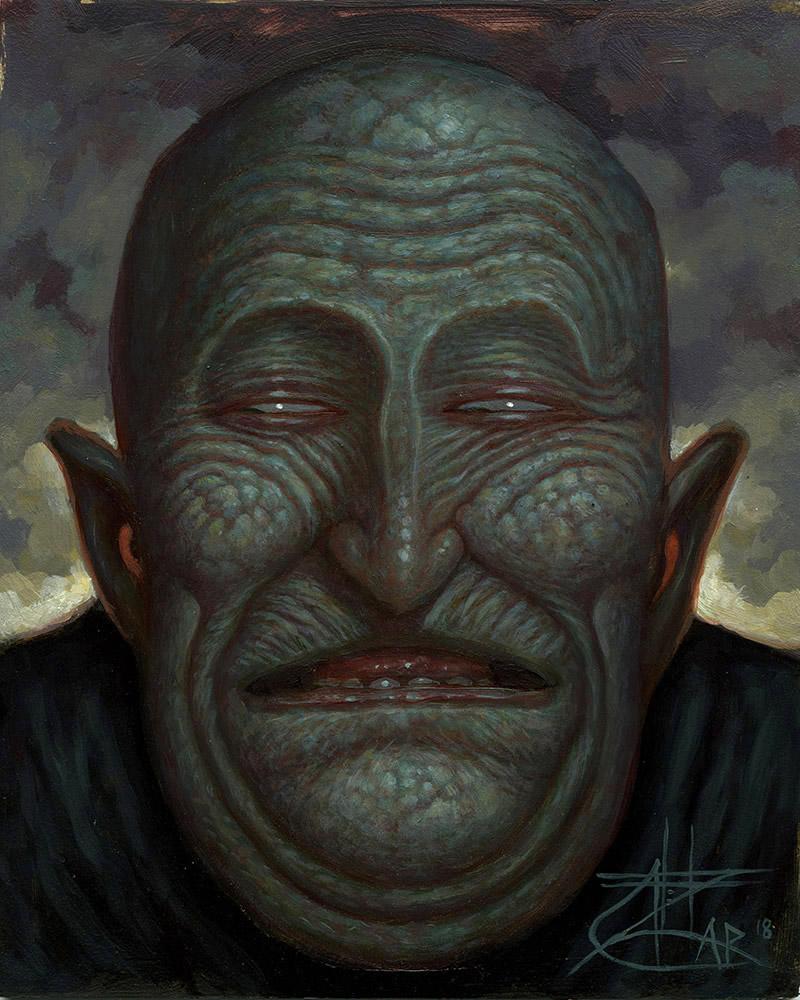
"Green Creep" - Oil painting by Chet Zar
The monsters are not here to destroy civilization; they are here to warn us, a symptom of a culture in crisis. Zar’s paintings ask us not only to look within ourselves but also to look out at our world and wonder what we may have been inappropriately valuing. They ask us to evaluate our understanding of difference and our grasp of acceptance, not only of ourselves but also of each other. Those in the light had their own mandated horrors of war, greed, starvation, injustice, and tyranny. In the dark, there was fantasy…the potential to create something unknown that would put terror in the dreams of those rational daylight fears. People spend so much time oppressing their darkness that they are unable to integrate an understanding of their whole nature. Thank goodness Zar is here to help us by bringing the monsters out of the closet.




 Cart
Cart


